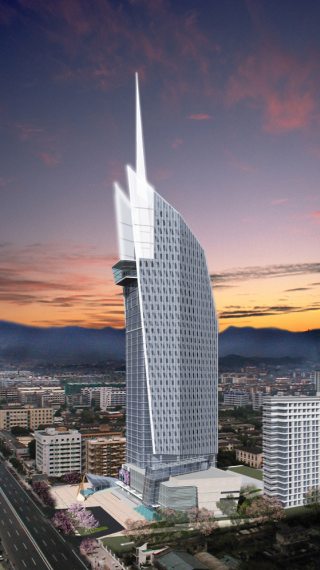|
Subscribe / Renew |
|
|
Contact Us |
|
| ► Subscribe to our Free Weekly Newsletter | |
| home | Welcome, sign in or click here to subscribe. | login |
Architecture & Engineering
| |
September 27, 2006
Mulvanny's Ming Zhang in China's top 20 designers
MulvannyG2 Architecture was recently selected as one of the top 20 most influential architectural firms in China during the 2006 China Landmark Summit in Beijing.
Ming Zhang, senior partner at MulvannyG2, was recognized among the top 20 most influential designers in China.
Ming Zhang is design director at MulvannyG2 Architecture, responsible for projects in the United States, China, Japan, Korea, India and the United Arab Emirates.
Some of his notable projects include China Construction Bank, Xiamen; Shanghai Fudan University Crowne Plaza Hotel, Shanghai; Zhangjiang Semiconductor Research Park, Shanghai; Fujian Provincial Electric and Power Co. in Fuzhou, China; Redmond City Hall; and Towers on Capitol Mall, Calif.
The Chinese Research Center for Urban Development and Environment sponsored the event, in cooperation with the World Landmark Association and the International Urban Cultural Association. Eleven Chinese firms and nine international firms were recognized for their work on landmark buildings in China's cities during the past three decades.
In addition to MulvannyG2, other U.S. firms were recognized: Skidmore, Owings, and Merrill, and Kohn Pederson Fox. Chinese firms selected include ECADI in Shanghai, Architectural Design Institute and Co. in Beijing, and Beijing Architectural Design Institute and Co.
Zhang's design for the Fujian power company is meant to suggest a flash of light and the company's high-tech nature, according to Zhang. It is scheduled to be complete at the end of this year.
“To participate in China's incredible growth and modernization is a privilege and especially meaningful to me,” said Zhang. “As a youth growing up in Nanjing, I never imagined that I would be recognized for creating landmark buildings in China. Designing buildings in China is an architect's dream, as developers seek high-imagery projects to fill skylines and make bold statements.”



